Daily Alta California
A Trip To The Coast–The Road— Crystal Springs — Crossing The Coast Range– Half Moon Bay — Spanishtown — Agricultural Prospects— The Beach— The Sea Lion Fishery — Incidents of Travel.
Many persons have lived for years in San Francisco without making themselves acquainted with any of the many pleasant and interesting localities which abound in the vicinity of our city. Many persons, who complain of the wine and dust, and noise and bustle of the city, neglect to take advantage of any opportunity to get out of it for a day or two, which everybody might do once or twice a year, and which, if they would do it, would give them an agreeable recreation and relaxation from business, as well as make them familiar with the country about us. Fully aware of our own delinquencies in this respect, on the morning of the Fourth of July, undetermined (sic) to get away from the din and hubbub which we had every reason to believe, from the premonitory symptoms which developed themselves during the night, would reign over the city on the glorious anniversary, when a great deal of patriotism is expended in smoke, and to take a trip into a section of country, which, although very near us and well worth visiting, is but little known to our citizens. Having received some days previously an invitation from a friend, who resides on the coast, about thirty-five miles from here, beyond Half- Moon Bay, to pay him a visit, we took a horse and buggy and wended our way in that direction. The road from here toward Half-Moon Bay, for the first eighteen miles, is over the travelled stage route to San Jose, with which most of our readers are familiar. At the end of this distance, we passed through a gate on the righthand side of the road, and turned our horse’s head toward the coast. The road, we learned, was a public one, but that the owner of the land on either side had taken the convenient means of putting up a gate in order to avoid the necessity of fencing. About five miles beyond the gate, the road descends into a beautiful little valley, after traveling up which a short distance we reached the “Crystal Springs,” a quiet little place, embosomed among the shady foliage of the brilliantly green live oak trees, and where an excellent hotel is kept by Edward Wehler, one of the pioneers, who came to California with Col. Stevenson, and who settled on this place about three years ago. Afterwards finding the land belonged to the estate of the late Wm. D. M. Howard, Mr. Wehlex purchased a hundred acres, a good portion of which he has improved, and if calm, quiet, natural beauty of locality, pleasant drives and rambles in the vicinity, hunting and fishing, and an excellent hotel, are any inducements ” Crystal Springs” will, ere long, become a place of considerable resort. After resting the animal, ” stabulating” him, and donating to him a certain quantity of a cereal known as the oat, and also furnishing our inner man with some fried eggs, with bread and fresh butter, to which our morning ride enabled us to do ample justice, we started on our continued journey to the coast. For a mile or so beyond the Springs, the road reminded us more of one of the old New England home roads in the still summer time, than any we have seen before in California. It it level and gravelly, shaded with willows and with oaks, which arch above it, pawing at times through clear, purling brooks, and then over bridges, with birds flitting among the branches, and grasshoppers humming in the fields at the roadside. About a mile beyond the springs, however, we left this road, and leaving on our right the beautiful place of Mr. Harazthy, we struck up the hillside. Now, we had heard there were hills to be climbed, and some ” pretty steep” places to go up, and some quite as steep to go down, and we had a very good general idea that between us and the Pacific stretched the Coast Range of mountains which it would be necessary for us to cross before we reached the ocean, but our travelling had been so limited of late that we had almost forgotten the height, and ruggedness. and perpendicularity of California hills, and so we rode on a couple of miles, all unconscious of the climbing up and climbing down which was in store for us, But at the end of this distance, we found ourselves at the foot, of the genuine Coast Range of mountains, the mother of all the little hills we had come over, and commenced the ascent. Horses seem to have a natural inborn objection to going up hill when they can avoid it, and their indisposition to ascend, seems to be decidedly augmented by the fact of having buggies attached to them, and particularly when these buggies contain bipeds who are capable, as the horse doubtless knows of walking. We found that our horse was not an exception to the general, well known rule, and after a futile attempt to enforce our at first modestly uttered request to him to ” get up,” we concluded it better to walk, which we did, leading the animal and his appendages up to the top of the mountain. For one unaccustomed to climbing, the ascent was a long and tedious one, although by no means dangerous and considered as nothing by those who are in the habit of doing it. The view however from the summit, is one which fully compensates for the labor required to reach it. From here, both the bay and the ocean are visible, the one lying still and placid in the summer sunshine, the other lashing itself and foaming up against our rugged coast From here the view extends on either side, a great distance. Far off in the blue ocean it reaches until the vision is closed upon the meeting of the sea and the sky, and on the other side, over the valley and the bay, to the grand mountains which rise up away in the distance. We stopped and gazed awhile upon the one side, and the other, and then commenced our descent. In addition to discovering the remarkable fact that horses are constitutionally opposed to going up hill, we ascertained, without much trouble, that they prefer, of the two, going down, and we found while ours had taken the matter slowly and philosophically on the way up, he was slightly inclined to go down in a hurry. So we got out and held him back a little, and managed to walk him along quite peaceably and respectably until we thought we had nearly reached the base of the mountain. Here, while resting on a table land in the road, we were met by an individual coming up on horseback, who had been apparently getting up a little extra patriotic ardor on the “Glorious Fourth.” In answer to our question as to the distance to Spanishtown, he informed us it was only about three miles; but “boys,” said he, “ye never’ll get down that way.” “Why not? “Well,” said our friend, “I’ve travelled a good deal first and last, and up and down a good many hills but, there’s a place yer a little further down that for steepness jest knocks the centre out of any buggy road I ever did see. Ye never can get down unless ye lock your wheels. Ye’ll have the buggy pitchin right over the horse’s head. Some o’ the way it’s straight up and down like a yard o’ pumpwater.” “Well,” said we. “What shall we do, we haven’t anything to lock our wheels with, and I think we better go back to the Springs and give up a trip to the coast for the present.” “O no boys,” said our friend, ” don’t go back; it’s a lovely spot when you get to it, and yer can go down easy enough if you just lock your wheels.” “But,” we reiterearted again, ” we have nothing to lock with.” “Well, boys,” he said, holding up a piece of rope about ten feet long, “yer’s a piece of rope I can let you have, come, what’ll yer give me for it?” “Well,” we said, “what’s it worth?” ” It cost me four bits and I think I ought to make two bits on it, so it’s yours for six bits.”
Glad to get in our possession the means of “locking the wheels,” we completed the purchase and although we were by this time a little suspicious that the steepness of the descent had been somewhat exaggerated by our friend, for the purpose of effecting the sale of his rope, we fastened the two hind wheels with it to the axletree, and started on. We soon found, however, there had been no exaggeration at all, and that for about fifty yards just previous to reaching the valley there was a little nearest to “straight up and down” buggy road it had ever been our fortune to travel. But our wheels were locked and below us lay, the valley green and smiling, inviting us down, and down we went , without really much trouble.
|
|||||||||||
|
|
|||||||||||
Meta
Recent Comments
- Dave Olson on About June Morrall
- Gerd Gunkel on About June Morrall
- Ed Holloway on About June Morrall
Categories
- "Mountain" Mike Merritt (6)
- "The Loop" (1)
- A La California: Sketches of Life in the Golden State (3)
- Acid Beach (5)
- Alexander Moore (1)
- AM Parker (2)
- AMB Beach (3)
- Angelo Misthos (5)
- Ano Nuevo (22)
- Ano Nuevo Island (1)
- Ano Nuevo lighthouse (1)
- Arches (3)
- Ashaleigh Parker (2)
- Atlantis Rising (1)
- Bathhouse Rock (1)
- Beach Clean-Up (2)
- Bean Hollow (2)
- Beat Museum (1)
- Bideawee (1)
- Bob Dougherty (1)
- Bobbi Ballard Pimentel (2)
- Buoys (1)
- Burney J. Le Boeuf (1)
- Burt Blumert (1)
- California Coastal Records Project (1)
- California Newspaper Project (1)
- California State Auto Association (1)
- Carrier Pigeon Point (2)
- Cascade Ranch Dairy (2)
- Charles Clark (1)
- Charles F. Humphrey (1)
- Charles Jones (1)
- Charles Swanton (1)
- Chicken's Roost (1)
- clusters (2)
- Coast Survey Maps (1)
- Coastside Arches (2)
- Coastside Beaches (1)
- Coastside Caves (1)
- Coastside Secret Beaches (5)
- Coastside Waterfalls (1)
- Coburn Mystery (14)
- Coburn Troley Co. (1)
- Colombia (4)
- Colonel Albert S. Evans (4)
- Colonel Zig Zag (1)
- Connie Morgan (1)
- Coya British Bark (1)
- Dan Mosier (1)
- Daniel Boone (1)
- Daniel Durigan (1)
- Dave Cline (1)
- Dave Holleman (1)
- Davenport (2)
- David Gremard Romero (1)
- Downey Harvey (1)
- Dr. Alan Brown (2)
- Dr. Carl Djerassi (1)
- Dr. Isaac Goodspeed (1)
- Dr. W. J. Marsh (1)
- Duarte's Tavern (1)
- Eadweard Muybridge (1)
- Edward Mullen (2)
- Eli D. Moore (2)
- Ezra Pound (1)
- Fireman Collins (1)
- Forget-Me-Not Barkentine (1)
- Fourth of July (1)
- Franklin Point (2)
- Fremont Older (1)
- Friends of the Calamari (1)
- Galen Wolf (1)
- Gary Gates & Friends (1)
- Gazos Creek (6)
- Geocaching (1)
- Ghost Net (1)
- Giant Limpets (1)
- gooseneck barnacles (1)
- Gordon's Chute (3)
- Guadalupe Fur Seal (1)
- Harvey Mowry (3)
- Hellespoint Shipwreck (1)
- Hen Frigates (2)
- Henry Blomquist (1)
- Henry Cowell (1)
- Historic Bottles (1)
- Hole in the Wall (2)
- Holes in Pescadero (1)
- Ida J. Steele (1)
- Invisible Beach (12)
- Isaac Graham (1)
- J. W.Seaver (1)
- Jan "the beeman" Snyder (1)
- Jane Schlager (1)
- Janet Creelman (1)
- Jerry Cimino (1)
- Jim Denevan (1)
- Jo Lysowsky (1)
- Joan Druett (2)
- JoAnn Semones (2)
- Joaquin Miller (1)
- Joel Bratman (2)
- John McCormick (1)
- John Morrall (1)
- John Schamle (1)
- John Vonderlin (171)
- Jon Boxerman (1)
- Josiah P. Ames (1)
- Judge Horace Templeton (1)
- Judge James T. O'Keefe (1)
- June Morrall (6)
- Kathy Duarte (1)
- Ken Fisher (1)
- Ken Kesey (6)
- Kings Mountain (1)
- Kristina Schmale (1)
- La Honda (6)
- Lake Lucerne (1)
- Larry (1)
- Larry Fitterer (8)
- Larry Witham (1)
- Laura Wall Taylor (1)
- Leah Lubin (1)
- Lemuel Coburn (1)
- Levy Brothers (7)
- Linda Wyatt Iacono (1)
- Lizzie McCormick (4)
- Lobitos (2)
- Loma Mar (1)
- Loren Coburn (3)
- Lou Denny Wayne (2)
- Mammoth Rocks (1)
- Manuel Chorro (1)
- Marty McCormick (1)
- Mary Florey (1)
- Merrill Bickford (2)
- Message in a bottle (1)
- Michael Bowen (1)
- Michael Head (1)
- Mike Merritt (2)
- Minot Judson (1)
- Molly Ramolla (1)
- Monty Parker (8)
- Myrtle Garavanta (1)
- Mystic Cowboy (1)
- Neal Cassady (1)
- Neptune's Vomitorium (6)
- Notrocks (1)
- Nunziati Dam (1)
- Ocean Shore Railroad (7)
- Oil (4)
- Omar N. Steele (3)
- Orril Fluharty (4)
- Orrin Brown (1)
- Outstandinginthefield (1)
- Pacific City/Coyote Point (1)
- Pacific Mail Carrier Peru (1)
- Palmer Gulch Trestle (1)
- Pebble Beach Hotel (2)
- Pebble Beach Poetry (1)
- Pescadero (26)
- Pescadero Architecture (3)
- Pescadero Hgh School (1)
- Pescadero Historical Society (2)
- Pescadero Oral History Project (1)
- Pescadero Trivia (1)
- Pescadero's Pebble Beach Hotel (3)
- Pigeon Point (3)
- Pigeon Point Lighthouse (13)
- Place Names of San Mateo County (2)
- Pomponio (2)
- Pomponio Creek (1)
- Princeton-by-the-Sea (1)
- Prohibition (6)
- Purisima Falls (2)
- Purple People Eaters (1)
- Pyramids (2)
- Ralph E. Wall (1)
- Redwood Trees (2)
- Rennesselear Steele (1)
- Richard Ledford (2)
- Rob Tillitz (2)
- Robin Caldwell (3)
- Ron Duarte (2)
- Russell Towle (23)
- Samuel Bean (1)
- San Francisco Call (1)
- San Gregorio (3)
- San Juan (3)
- San Mateo County History Museum (1)
- Sarah Coburn (1)
- Sarah Swanton (1)
- Sawmills (1)
- Sea Monster (1)
- Sea Serpents (1)
- Shawn Mann (1)
- Sheri Martinelli (2)
- Sir John Franklin (1)
- Smuggler's Cove (1)
- Snails (1)
- South Coast beaches (6)
- South Coast Brick (1)
- South Coast Tunnels (4)
- Spaulding Corner (1)
- SS Fremont (1)
- Stacy Trevenon (1)
- Steele Family (6)
- Storm 1998 (1)
- Susan Friedman (3)
- Swanton House (1)
- Tafoni (1)
- Tarballs (1)
- Terry Adams (3)
- Tess Black (3)
- The Butano (7)
- The Contender (4)
- The Gazos (1)
- The Notch (1)
- The Pollocks (1)
- The Quest (3)
- The Seven Sisters (1)
- The Wrack (2)
- Thomas Butwell (1)
- Tires (2)
- Tom Butwell (1)
- Torquay (2)
- Trefiret Beach (1)
- Tunitas Creek (9)
- Uncategorized (412)
- Upenuf Road (1)
- Vanishing Beaches (1)
- Vulcan's Donut (1)
- Wadell Beach Bypass (1)
- Warm Water Lagoon (4)
- Whale Fall (1)
- Whale Watching (1)
- whaling (2)
- William Steele (1)
- Willowside Dairy (2)
- WJ Savage (1)
- Worm Farm (2)
- WWII Coastside (2)
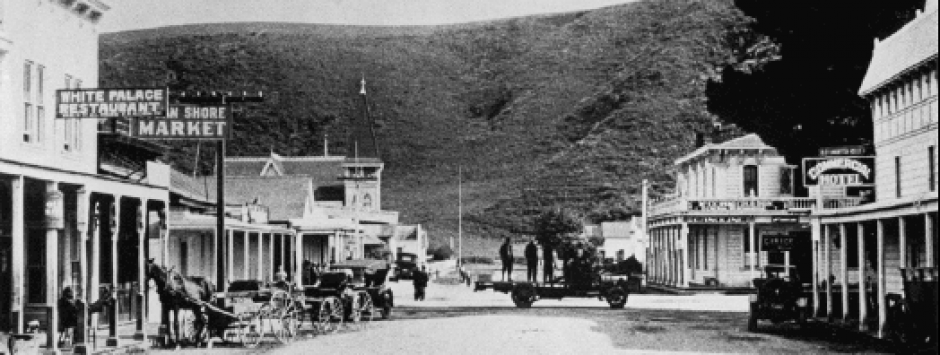

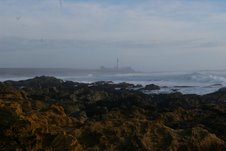
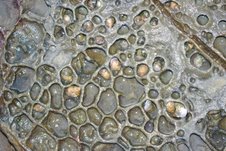
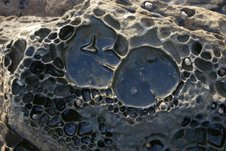
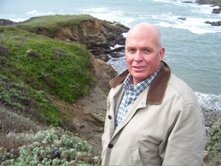 Story from Rob Tillitz
Story from Rob Tillitz